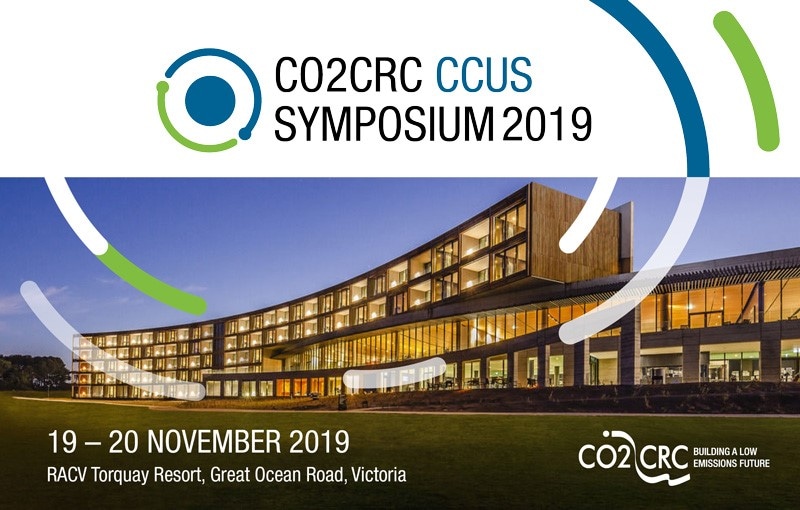Nov 23 2019
Over the past two days, CO2CRC brought together more than 130 delegates for a two-day symposium on the greenhouse gas mitigation technology, carbon capture, utilisation and storage (CCUS).

Top national and international scientists and researchers along with industry leaders, professionals, technology vendors and policy makers met in Torquay, Victoria to showcase fundamental developments in CCUS R&D, the latest progress on demonstration projects and updates from large-scale CCS projects around the world.
Delegates from all over Australia and the world including the USA, Germany, Japan, France and Italy attended the event. Chevron, TOTAL, Shell, ExxonMobil, Santos, Woodside, ENI, Japan CCS and J-Power were among the organisations to attend.
The event featured an impressive line-up of speakers. Notable was Chevron’s CO2 Team Leader Mark Trupp who explained progress on the Gorgon carbon dioxide injection and storage project, the world’s largest commercial-scale CCS project which began operations in August in Western Australia.
Mark McCallum, CEO of COAL21 highlighted his company’s commitment to develop a commercial scale CCUS project in Queensland’s Surat Basin with a final investment decision to begin construction of a $150m carbon capture plant at the Millmerran Power Station scheduled for June 2020.
CO2CRC Chairman, Martin Ferguson AM, opened the Symposium highlighting 2019 as a significant year for Australian CCS projects, in WA and Victoria.
“In WA, we have seen the commencement of Chevron’s Gorgon Carbon Dioxide Injection project in Western Australia.
“Not only is this one of the world’s largest greenhouse gas mitigation projects – it is also raising public awareness that CCS is viable in large-scale industry. It demonstrates to the nation that CCS is not a dream for the future but a reality today.
“In Victoria, the launch of the Hydrogen Energy Supply Chain pilot project has been another leap forward for CCS in Australia. The CarbonNet Project has also reached an exciting phase and in coming weeks will commence drilling an offshore appraisal well in Bass Strait,” he said.
Mr Ferguson highlighted the $194 billion export value of Australia’s coal, LNG and iron-ore resources in 2018-19: “As a former Minister for Resources and Energy, I have long believed that it is in Australia’s national interest to take advantage of all our natural energy resource endowments to enhance economic prosperity.
“CCS can play a vital role in helping Australia achieve continued economic prosperity while meeting international emissions reductions commitments. The reality is that, over the long-term, there is unlikely to be a cost-effective emissions reduction response without CCS,” he said.
Other notable presentations included:
Illinois State Geological Survey’s Director of Energy and Minerals, Steve Whittaker and Associate Director of Energy and Minerals, Sallie Greenberg in separate talks, discussed the initiatives in the United States to develop commercial scale geological storage of carbon dioxide from industrial sources.
Frank Morton, Director of Technology Development at the US Department of Energy sponsored National Carbon Capture Centre explained the centre’s work to accelerate the development of carbon dioxide capture technology through international collaborations.
GFZ German Research Centre for Geosciences’ group leader of Geoenergy, Connie Schmidt-Hattenberger spoke about recent developments in subsurface operations from a European perspective highlighting Germany’s contribution.
Daiji Tanase, General Manager of Storage Engineering of Japan CCS Co. explained the progress of carbon dioxide injection at the Tomakomai CCS demonstration project, a Japanese government led full-chain CCS project in Japan.
The symposium program covered a wide range of topics including technical sessions on advancements to reduce the cost of capture, optimise storage operations and enhance carbon dioxide utilisation. Additional workshops and forums were organised around the two-day event to provide delegates with opportunities to explore collaborations and make the most of new technological developments.
CO2CRC CEO, David Byers, told the symposium that this year CO2CRC reached a significant milestone with the commencement of its Stage 3 Project.
“Stage 3 is the largest capital project we’ve ever undertaken and will take storage monitoring to the next level. Permanent subsurface technology will provide data on demand and at a lower cost than traditional methods.
“Thanks to Stage 3, our Otway National Research Facility is now the largest and most accessible CCS sub-surface research centre in the world,” Mr Byers told delegates.
Delegates also had the opportunity to enjoy two evenings of social events and at an awards ceremony on Tuesday night CSIRO’s Dr Charles Jenkins’ contribution to the science behind CCS was acknowledged when he took out the prestigious John Tyndall award.
The symposium was sponsored by COAL21 and Silixa.